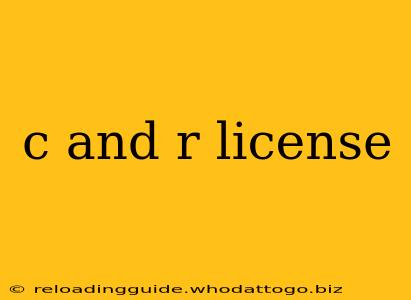Navigating the world of software licensing can be complex, especially when dealing with licenses for programming languages like C and R. While these languages themselves are open-source and freely available, the licenses governing their use and distribution vary depending on the specific software and libraries involved. This guide aims to clarify the common licensing models encountered within the C and R ecosystems.
What is a C License?
The term "C license" doesn't refer to a single, unified license. Instead, it encompasses various licenses used for C-related software, libraries, and tools. The most common licenses you'll encounter include:
-
GNU General Public License (GPL): A widely used copyleft license, meaning any derivative work must also be licensed under the GPL. This ensures that modifications and improvements remain open-source. Popular C libraries and projects often employ the GPL, promoting collaboration and community development.
-
MIT License: A permissive license that grants users broad rights to use, modify, and distribute the software, even for commercial purposes. It typically only requires attribution to the original author. Many C libraries opt for the MIT License for its flexibility.
-
BSD Licenses (various): Another family of permissive licenses, offering similar freedoms to the MIT License, with variations on the required attribution clauses.
Understanding the specific license associated with a particular C library or software is crucial. Always consult the LICENSE file included with the project for details. Failing to comply with the license terms can lead to legal issues.
How to Identify a C License:
Look for a LICENSE file (or sometimes COPYING) in the root directory of the C project or library. This file contains the full text of the license. The filename itself may provide a clue (e.g., LICENSE-GPL, LICENSE-MIT).
What is an R License?
Similarly, "R license" is a broad term. The core R language itself is under the GNU General Public License (GPL), but packages within the Comprehensive R Archive Network (CRAN) and other R repositories may use a variety of licenses.
The licensing situation in the R ecosystem is more varied than in the C world due to the vast number of contributed packages. You might find packages using licenses such as:
-
GNU General Public License (GPL): As mentioned, the core R language itself and many contributed packages use the GPL.
-
GPL-2: A slightly older version of the GPL. Understanding the difference between GPL-2 and GPL-3 is crucial as it affects the compatibility of derivative works.
-
GPL-3: The most recent major version of the GPL, often preferred for its updated clauses covering various technological advancements not accounted for in previous versions.
-
Other Permissive Licenses (MIT, BSD, etc.): Many R packages employ permissive licenses to encourage broader usage and integration into various projects.
How to Identify an R License:
Each R package usually includes a LICENSE file in its source code, readily accessible within the R environment. You can also check the documentation or the package website for information on its license. CRAN provides license information for each package on its website.
Implications of Different Licenses
The choice of license has significant implications:
-
Copyleft (e.g., GPL): Requires that any derivative work also be open-source under the same license. This encourages community collaboration but might restrict commercial use in certain ways.
-
Permissive (e.g., MIT, BSD): Allows for more freedom in usage, modification, and distribution, including commercial use. Generally, a simple attribution requirement is sufficient.
It's crucial to carefully review the terms of each license before using, modifying, or distributing software or libraries. Ignoring license requirements can lead to legal problems and reputational damage.
Conclusion
Both C and R benefit from a diverse landscape of licenses, catering to different project needs and goals. Understanding the nuances of various licensing schemes is essential for developers and users alike to ensure responsible and compliant use of software within these influential programming ecosystems. Always consult the relevant license documentation for the specific software or library you intend to use.

